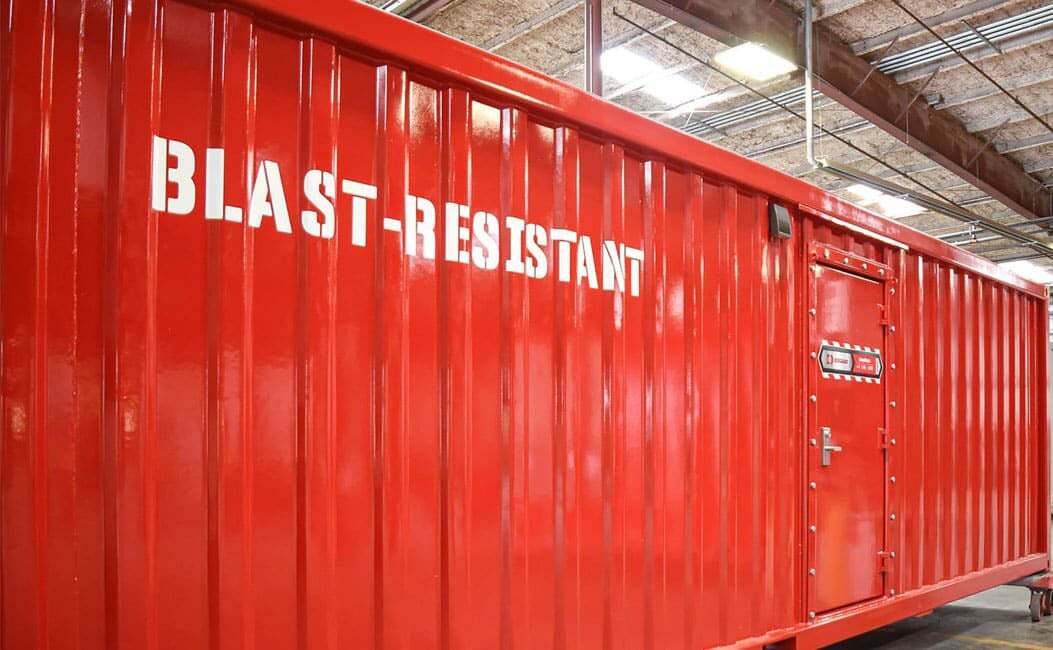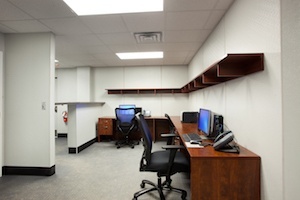5 Questions to ask Before Choosing A Blast-Resistant Building in 2024


The following article was originally published in March 2013. It was written by our company's founder, Jeff Lange. We've updated it to reflect current industry facts and trends.
Although there are no regulations for the design and construction of blast-resistant buildings, many of us are working toward that goal. In the meantime, you need to ensure the protection of your team. With so many options available, it can be challenging to know which vendors to trust and what questions to ask.
We are here to help you navigate the buying process. Below, we cover the five key questions you should be able to answer before deciding on a blast-resistant building company. By getting clear answers, you'll be able to choose a building that provides you and your team the peace of mind you deserve.
1. Was the Module designed and tested by a blast expert?
The science of blast-resistant building design is no longer a new science, but it is still true that only a small group of experts have tested their designs. Make sure your blast-resistant building design has been taken off the drawing board and successfully blast-tested under the supervision of a well-credentialed third-party engineer.
There's no shame in asking about your vendor's "experts." Even if they are civil or structural engineers, it's worth knowing about their training and background. Do they have years of experience in the science of blast-resistant design, or did they take a three-day course to qualify them?
2. Are blast test reports specific and conclusive?
There are many interpretations of the term blast-tested (see question five), but a successfully blast-tested building has the proven ability to actually save lives. Pay special attention to duration and psi ratings when you review blast test reports because different applications call for different specifications. A laboratory blast-resistant building placed next to a blowdown stack should carry a higher rating, such as 8 psi, while a guard shack placed at the perimeter of your facility may only need a 3- to 5-psi rating.
3. Was it blast-tested for nonstructural/ structural components?
If a structure survives a blast but its interior walls, lights or other fixtures create  shrapnel, the risk of casualties is still high. Always ask blast-resistant building vendors to provide data and rationale for nonstructural items, including wall and ceiling finishes, light fixtures, plumbing fixtures, cabinets, placement of open shelving (should be no higher than 40 inches above the floor), and placement of any intake points (which can vary in height, but need to be properly sealed for the environment or hazard).
shrapnel, the risk of casualties is still high. Always ask blast-resistant building vendors to provide data and rationale for nonstructural items, including wall and ceiling finishes, light fixtures, plumbing fixtures, cabinets, placement of open shelving (should be no higher than 40 inches above the floor), and placement of any intake points (which can vary in height, but need to be properly sealed for the environment or hazard).
4. Can the following information be provided?
- Was the blast-resistant module tested dynamically rather than statically?
- Was it tested in a free field environment?
- Was a P-I (pressure-impulse) curve generated to show the blast-resistant building's response over a wide range of blast loading?
These items are too technical to cover in the context of this article but should be on your list of discussions to initiate with any blast-resistant building vendor. Our engineering department can even address these issues with you, too.
5. Does the Building's response level demonstrate its capability to save lives?
As mentioned in question two, the interpretation of ratings is everything. A blast-resistant building vendor can claim its product has been blast-tested (and maybe it has), but if closer examination of test data demonstrates a high-response result, this is not the structure you want protecting your personnel. Response level ratings have been established by the American Society of Civil Engineers to predict the extent of repair resources needed after an explosion. Here's the key: high response equals high damage, so it's crucial to study the response level table, then take a very close look at any blast-resistant module's response rating for a given duration and psi (as proven through actual blast testing).
GET A SECOND OPTION ON YOUR FACILITY SITING STUDY RESULTS WITH A THIRD-PARTY ENGINEER
With continued research and product development, previously hazy areas of blast-resistant building engineering are quickly coming into focus. When you go shopping for blast-resistant buildings, it's important to ask solid questions and expect solid answers. What it really boils down to is finding a vendor committed to doing the right thing, and this commitment will be visible in the vendor's documentation.
If your facility siting study results are complex, confusing, or present only one proprietary solution, consider seeking a second opinion from an engineer. Doing so can provide a more comprehensive understanding of your results and available solutions.
At RedGuard, we are committed to ensuring your facility's safety and integrity. To support this, we offer to cover the cost of a 30-minute consultation with an engineer who can delve into your FSS results. These experts will analyze your findings and present safety alternatives that you may not have previously considered. Click below to learn more!
Jeff Lange
Jeff Lange, now a managing partner for LANGE, the parent company of RedGuard, founded the company as ABox4U in 1998. It was originally a portable storage company, and through the years has been rebranded with a specialty in creating blast-resistant buildings for oil and gas companies. He saw an early need to focus on safety and made it a passion to create products that save lives. With a strong leadership team at RedGuard that oversees day-to-day operations, he remains a managing partner at RedGuard and several other divisions of his LANGE company.


